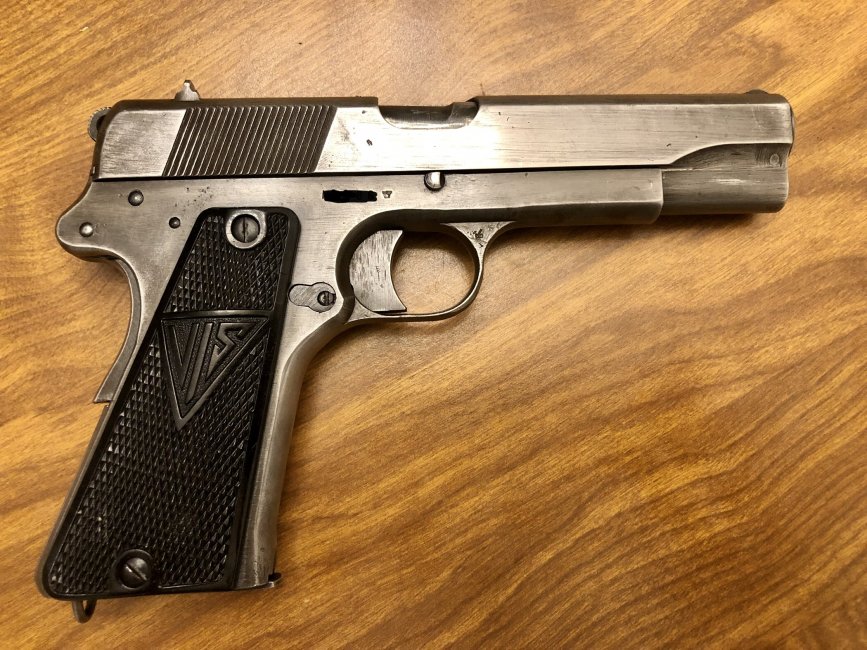

Like the 9mm Browning GP, a characteristic feature was a triangular grip shape, wider at the bottom, offering good ergonomics and firm grip. It shares some similarities to the Spanish Ruby. This later John Moses Browning design, unlike the M1911, was not cammed by a link, but by a ledge of sorts, which contacts a portion of the barrel and forces it down as it is moved rearward with the slide by the recoil force. It operated on the short-recoil principle, with the barrel being cammed down and away from the locking lugs in the slide. The design was generally based on American firearms inventor John Browning's Browning Hi-Power, as adapted by Piotr Wilniewczyc and Jan Skrzypiński in 1930 at the Fabryka Broni (Arms Factory) in Radom under Director Kazimierz Ołdakowski.

Largely based on the Browning Hi-Power and using 9 mm rounds, the Vis is highly prized among collectors of firearms. The pistol was valued by the Germans and towards the end of the war issued to German paratroopers. Production of the Vis began at the Fabryka Broni arms factory in Radom in 1935, and was adopted as the standard handgun of the Polish Army the following year. Its design was inspired by American firearms inventor John Browning's 9mm 'Browning GP' pistol which was completed after Browning's death by designers at Fabrique Nationale in Herstal Belgium.

35 Vis, German designation 9 mm Pistole 35(p), or simply the Radom in English sources) is a 9×19mmcaliber, single-action, semi-automatic pistol. The German Army 'Eagle/swastika' firing proof and 'Eagle/623' acceptance mark are stamped on the left side of the slide behind the patent number.Jump to navigationJump to search Pistolet wz. These pistols were produced under German occupation using conscript Polish workers. WWII Nazi production Polish P35 Radom pistol.


 0 kommentar(er)
0 kommentar(er)
